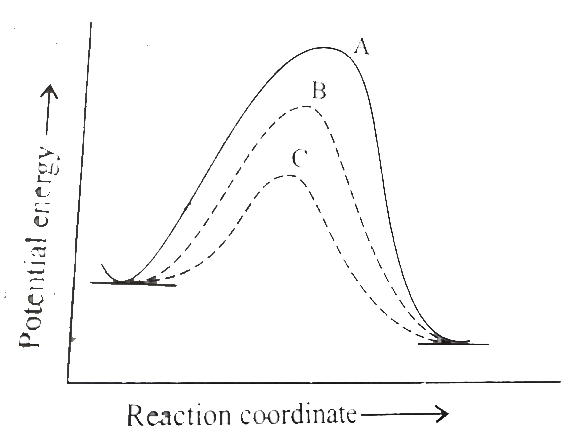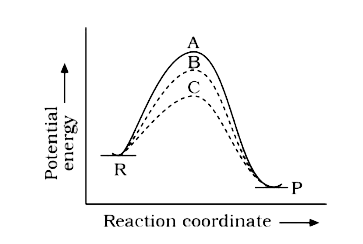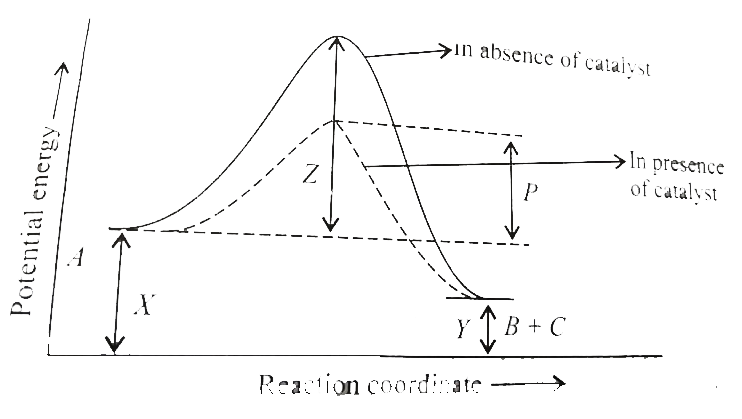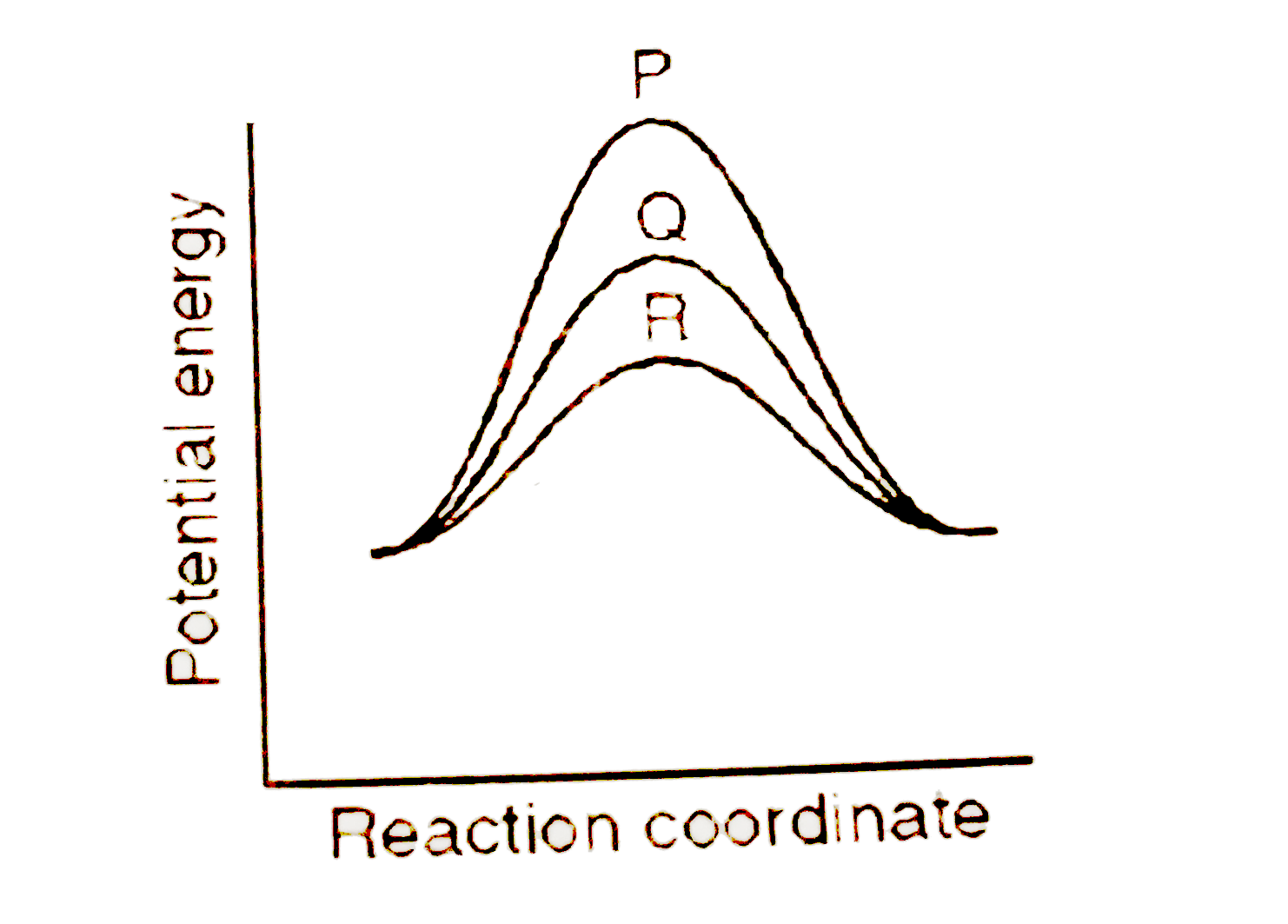Substances which alter the velocity of a reaction by mere presence, without undergoing any change in mass and compossition are termed catalyst and the phenomenon is known as catalysis
In homogenous catalytic reactions, there are three alternative paths A, B, and C (shown in figure). Which one of the following indicates the relative ease with which the reaction can take place?

A.B.C
C.B.A
B.C.A
A=B=C
The correct Answer is:B
Activation energy in the different path lies in the following sequence: C<B<A
Lesser is the activation energy, greater is the ease with which the reaction can take place.
∴C>B>A (Decreasing ease with which the reaction can take place.)
Topper's Solved these Questions
- SURFACE CHEMISTRYBOOK - CENGAGE CHEMISTRYCHAPTER - SURFACE CHEMISTRYEXERCISE - Exercises Multiple Correct
25 Videos
- SURFACE CHEMISTRYBOOK - CENGAGE CHEMISTRYCHAPTER - SURFACE CHEMISTRYEXERCISE - Exercises Single Correct
52 Videos
- SURFACE CHEMISTRYBOOK - CENGAGE CHEMISTRYCHAPTER - SURFACE CHEMISTRYEXERCISE - Exercises Subjective
10 Videos
- SOLUTIONSBOOK - CENGAGE CHEMISTRYCHAPTER - SOLUTIONSEXERCISE - Ex 2.3 (Objective)
9 Videos
- SYNTHETIC AND NATURAL POLYMERSBOOK - CENGAGE CHEMISTRYCHAPTER - SYNTHETIC AND NATURAL POLYMERSEXERCISE - Exercises Assertion Reasoning
10 Videos
Similar Questions
If a homogeneous catalytic reaction follows three alternative paths A, B and C, then which of the following indicates the relative ease with which the reaction moves?

View SolutionSubstances which alter the velocity of a reaction by mere presence, without undergoing any change in mass and compossition are termed catalyst and the phenomenon is known as catalysis
According to the adsorption theroy of catalysis, the rate of reaction increases because
View Solution
Knowledge Check
Substances which alter the velocity of a reaction by mere presence, without undergoing any change in mass and compossition are termed catalyst and the phenomenon is known as catalysis
Which is incorrect for a catalyst?AA catalyst can initiate a reaction.BA catalyst remains uncharged in quality and composition at the end of reaction.CIt does not alter the position of equilibrium in a reversible reaction.DCatalyst are sometimes very specific in reaction.A homogenous catalytic reaction takes place through the three alternative plots A, B, and C shown in the given figure. Which one of the following indicates the relative ease with which the reaction cant take place?
 AA>B>CBC>B>ACA>C>BDA=B=C
AA>B>CBC>B>ACA>C>BDA=B=CA homogenous catalytic reaction takes place through the three alternative plots A, B, and C shown in the given figure. Which one of the following indicates the relative ease with which the reaction cant take place?
 AA>B>CBC>B>ACA>C>BDA = B = C
AA>B>CBC>B>ACA>C>BDA = B = C
Substances which alter the velocity of a reaction by mere presence, without undergoing any change in mass and compossition are termed catalyst and the phenomenon is known as catalysis
For the reaction (A→B+C) , the energy profile diagram is given in the figure below.

The decrease in ht eenergy of activation in hte presence of catalyst is
View SolutionSubstances which alter the speed of a chemical reaction without themseives undergoing a permanent change are known as
View SolutionSubstances which alter the speed of a chemical reaction without themselves undergoing a permanent change are known as
View SolutionSubstances which alter the speed of a chemical reaction without themselves undergoing a permanent change are known as
View SolutionIf a homogeneous catalytic reaction can take place through three alternative paths as depicted below, the catalytic efficiency of P,Q R representing the relative case would be

View Solution
